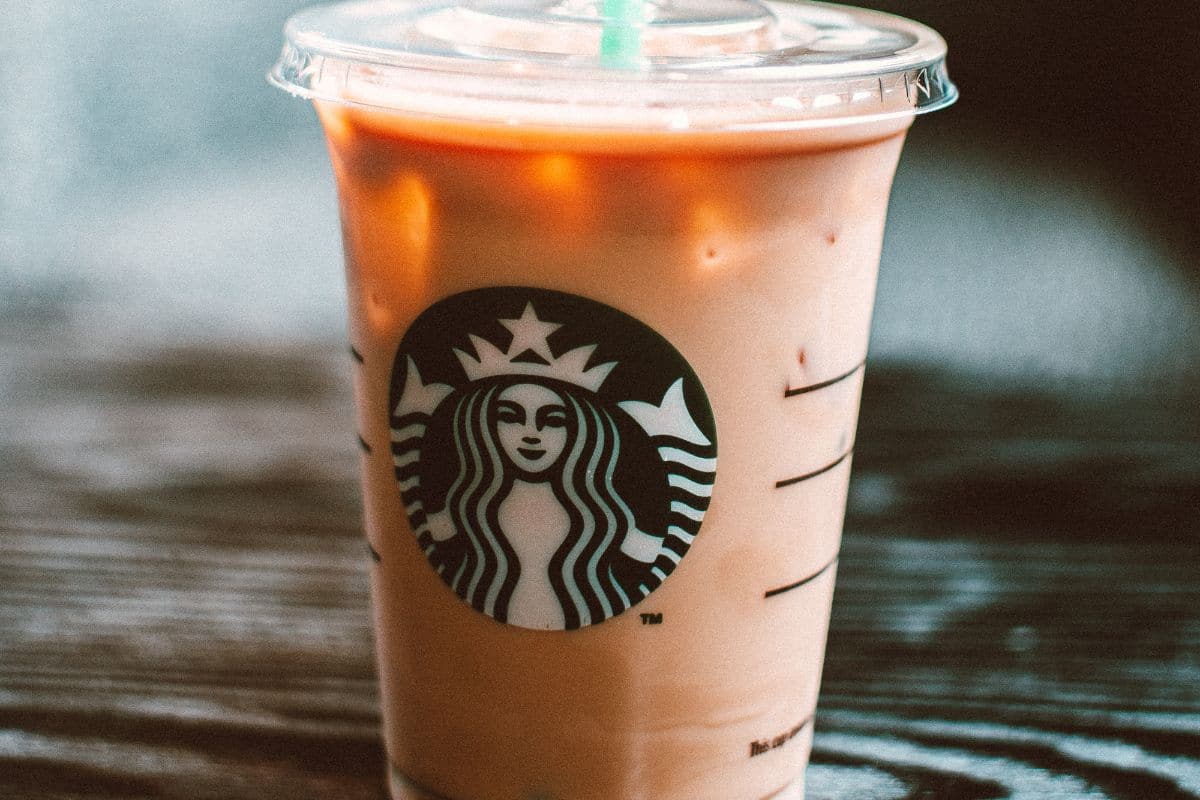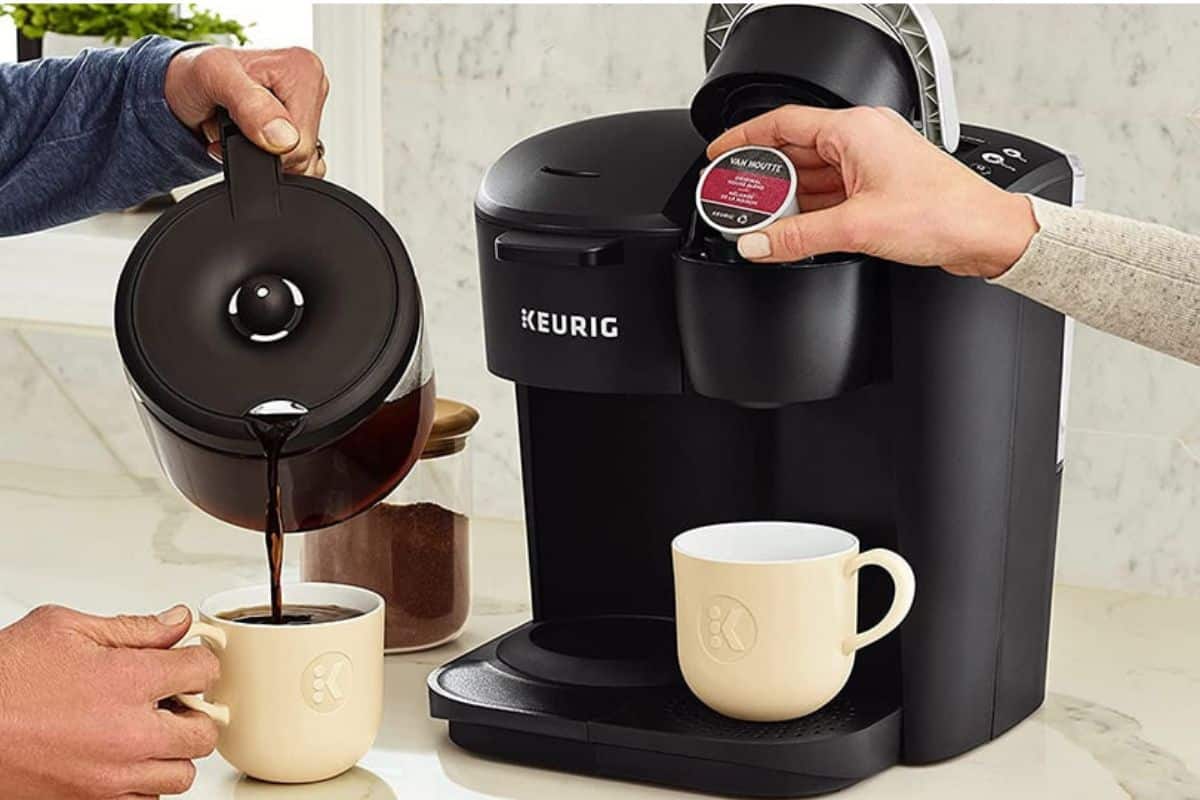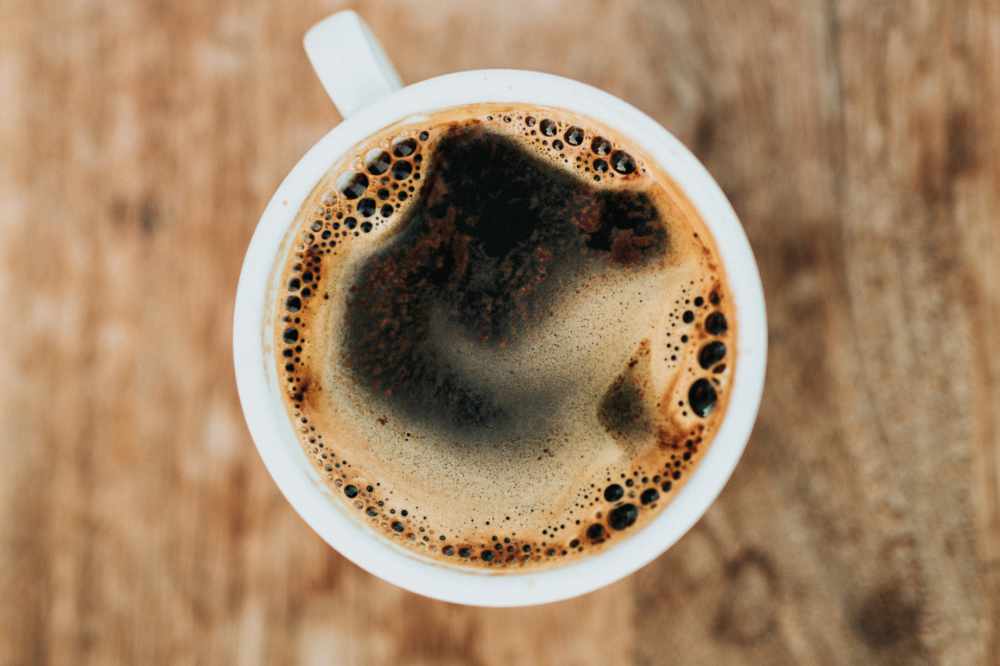One of the most common requests in the coffee-making world is how do I use an espresso machine?
This simple question is so frequently asked because unfortunately, the answer is not straightforward. Espresso making can vary from the simple press of a button to a complex set of steps that require the skills and experience of a trained barista.
If you love indulging in a bold and intense shot of espresso or you can’t beat that smooth, creamy latte then nothing is more rewarding than learning how to achieve these delicious concoctions from the comfort of your own home.
This article explains everything you need to know to brew coffee espresso-style and all the variables that can arise as you do so.
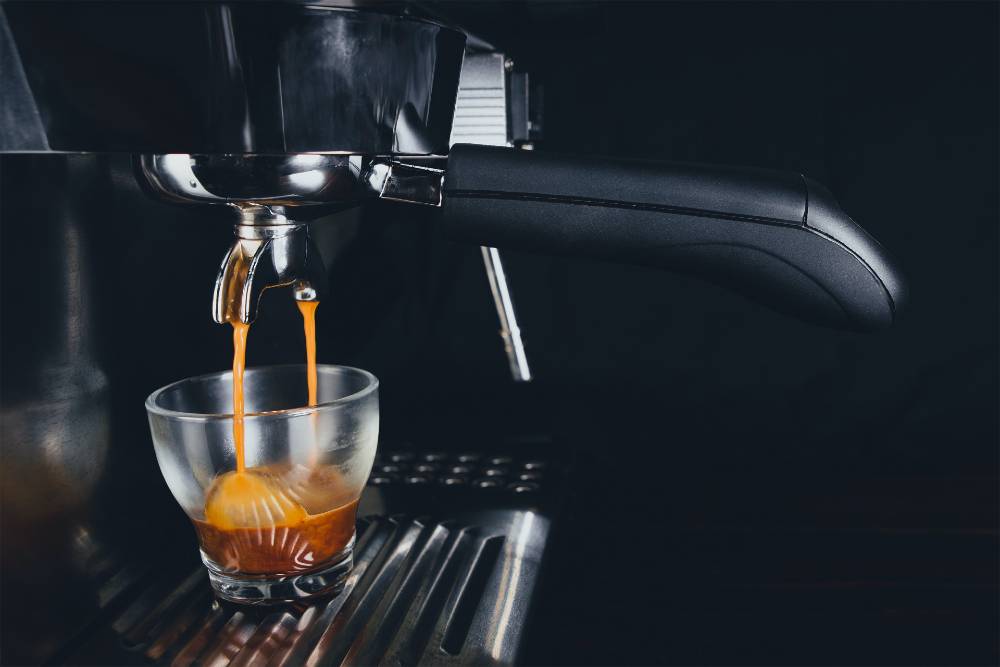
What Do You Need To Make Espresso?
Hot Water
The water temperature needed to make espresso has to be hot but not boiling. The water used to make a shot of espresso needs to be between 195F to 205F when it reaches the espresso grounds.
If the temperature is too high, the coffee will taste bitter and harsh. If the temperature is too low, the coffee will taste weak and thin.
Pressure
The full flavor found in espresso is extracted thanks to high pressure as well as the hot water. To brew a true espresso you need at least 9 bars of pressure.
For comparison, a stovetop Moka pot only manages 1-1.5 bars. While it’s sold as an “espresso pot” it’s technically not “true espresso”. Although it does use some pressure, so it’s certainly espresso-like.
Of course, it goes without saying, because the likes of French Press and Drip coffee are not brewed under pressure, they are not espresso.
Coffee Beans
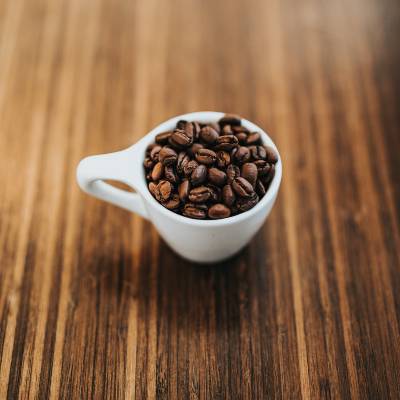
The coffee used to brew espresso is a lot more variable than people think. Although there are a lot of ‘espresso beans’ and ‘quality espresso coffee’ sold in stores, the correct choice actually comes down to personal preference.
A darker or Italian roast coffee bean releases more oils and is often a good choice for espresso. They have a rich depth of flavor and the oils help create a thick crema. Although dark roasts work well with this brew method there is no reason why a light roast coffee bean can’t be used as well. If you prefer floral or fruity notes to your cup of coffee as well as a lighter mouthfeel then a medium-light roast may be the thing for you.
The important thing when choosing your coffee beans is to try and get them as fresh as possible, ideally from a local roaster as this will give you the best flavors and aromas.
Types Of Espresso Machine
Before we look into how to use an espresso machine we first need to understand the different kinds of espresso makers available. They vary in their design and the way they work, with some giving you more or less control over the espresso brewing process.
Manual Lever Machine
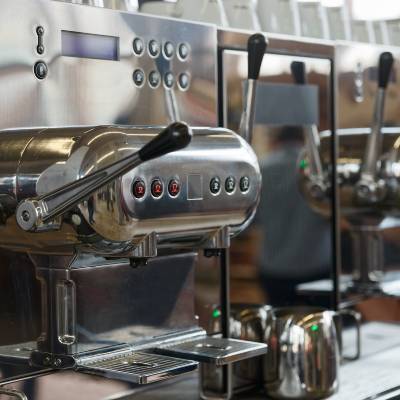
The manual espresso maker uses manpower to pull a shot. It usually has a single boiler, no pump, and uses a lever to create the pressure required to brew espresso. The barista does all the hard work and can accurately control all the small variables such as pre-infusion and pressure profiling to get the most out of all the different types of coffee.
Manual lever machines are rarely used these days as they are hard work and take a lot of practice. The espresso can vary a lot between batches and these machines take time to work so are not suitable for busy coffee shops.
Semi-Automatic
The semi-automatic espresso machine is a more popular choice. These coffee makers use pumps to create the pressure so all you need to do is switch it on. You get full control over the coffee grind, tamp, and extraction time so there’s still a lot of room for customization.
These machines are good for at-home use if you like a hands-on approach and most cafes will use them too. Commercial machines will almost always be bigger and tougher than espresso machines for home use. One of the best espresso machines for a household is the Breville Barista Express.
Automatic
Automatic espresso makers are similar to semi-automatic ones but they control the extraction time. The machine gives you a consistent shot size and often has the option to select a single or double shot. These machines are often used in busy coffee shops or for home espresso brewing.
Super-Automatic
The super-automatic espresso maker does everything for you. It grinds the beans into the portafilter basket, tamps them, and then controls the extraction process as well. These machines usually just require you to press a button so are easy to use but don’t allow for any modifications.
They are good for easy, at-home use or in an office or other workspace.
How To Make Espresso
Prep The Machine
The first thing you need to do when making espresso is to set up your machine. You can run tests on some machines to check the temperature and pressure are sitting in the ideal range.
Make sure the water tank is topped up and switch on the boiler. Most espresso machines have a light that switches on or off when the machine is ready.
It’s a good idea to warm the group head by flushing the machine through before you attach the portafilter. This gets cold water out of the way and prevents under extraction.
Grind The Beans
Next up we need to weigh out and then grind up our coffee beans. The general rule is around 6-8 grams of coffee for a single shot (1-1.5 ounces) and around 15 grams for a double shot (2 ounces).
Espresso coffee needs to be a fine grind size (like fine table salt or sugar) but not ultra-fine powder like Turkish coffee. The ground particles will be around 1/32 of an inch, or 0.8 mm. The exact grind size will vary with different types of coffee used so does take a bit of trial and error when you’re using a new machine or different brand of coffee.
If the espresso is thin and watery then you want to select a finer grind next time. If the extraction is too slow and the shot is very concentrated then select a coarser setting.
The only way to make ground coffee for espresso is to use a burr grinder. These machines allow fine control over the particle size of the coffee to ensure a good quality extraction.
Fill The Filter Basket
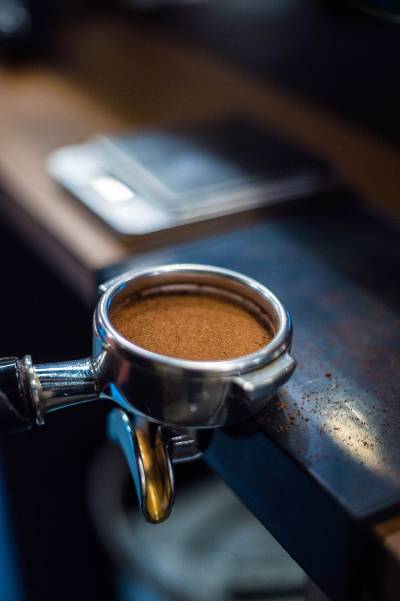
Add your coffee to the portafilter and the type of filter basket determines what you do next. If it’s a pressurized portafilter then it needs a coarser grind and does not need tamping.
If you’re using a non-pressurized filter basket (more common) then you need a finer grind and you will need a tamper. It takes 20-30 pounds of pressure to deliver the perfect tamp. Press down firmly and do a gentle twist motion as you pull away from the coffee to ‘polish’ it.
This should leave you with a smooth and even ‘puck’ of coffee in the filter basket ready to attach to the group head.
Pre-Infusion?
Low-pressure pre-infusion is a step that some baristas swear by whereas others don’t rely on as much. To perform this step you really need a manual lever or a machine with these settings built-in. Although you can quickly switch the pour on and off on a semi-automatic espresso machine, wait for 10 to 20 seconds, before carrying on with a regular espresso shot.
The idea is that you expose the coffee puck to water at low pressure which evenly soaks the beans before extraction begins. This stops water from channeling through small areas of the puck and gives an evenly extracted espresso.
Espresso Extraction
The extraction process and espresso dosing is a step that needs to be considered if you’re using a manual or semi-automatic machine. You can dose the espresso by weight using a special coffee scale and take into account the time taken.
No matter if it’s a single or double shot of coffee, your extraction time should fall between 20-30 seconds and the shot should weigh 1-1.5 ounces (28-42g) for a single shot and 2 ounces (56g) for a double shot.
A shorter extraction time of 15 seconds gives a more concentrated shot called a ristretto and an extraction time longer than 30 seconds gives a lungo coffee.
Clean Up
Now you have your espresso ready to go, don’t forget to clean up. Dump those coffee grounds in a dump bucket ready for composting or set aside for use in other recipes.
Rinse the portafilter thoroughly and flush out the group head. Wipe the machine with a damp cloth to remove any coffee grounds and switch it off (unless you’re keen for a second round!)
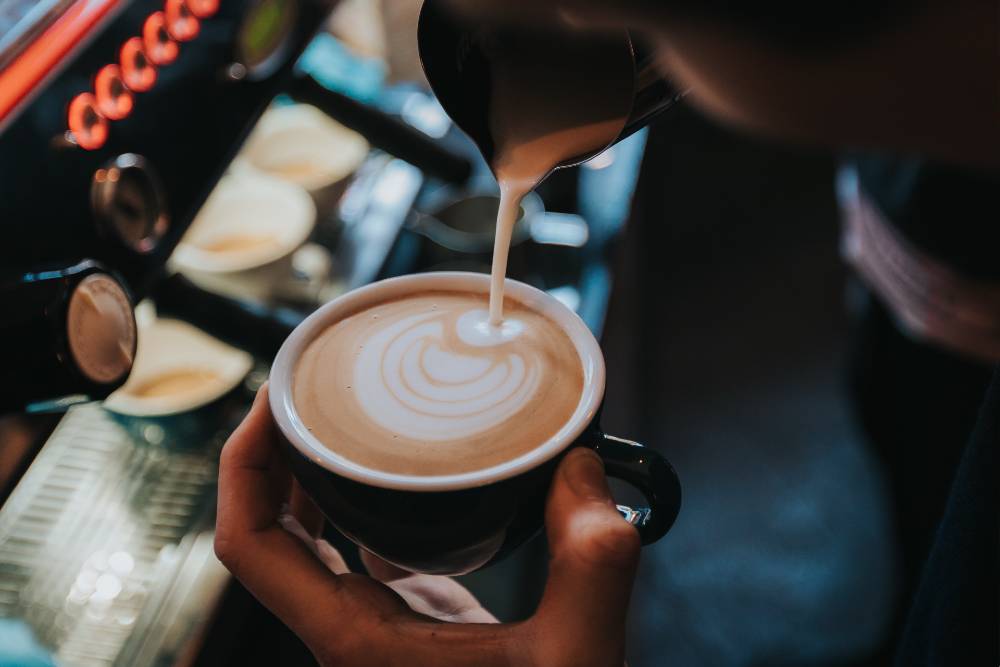
Add Milk?
The final step with espresso brewing comes if you prefer specialty coffee drinks like a latte, cappuccino, or similar. These drinks are made by adding steamed milk to the espresso.
To make these drinks you can use a steam wand (most espresso machines have these) or a milk frother jug. Both of these options start with cold milk being added.
The frothing jug heats and swirls the milk for you so all you need to do is turn the machine on and wait.
To steam milk with a wand (like a true barista) you need to make sure the espresso machine is turned on to steam mode. Once it’s warm, open the valve to flush any water out of the steamer into an empty jug or the drip tray. Close the valve when it’s just steam being dispensed.
Lower the tip of the wand so that it’s just at the surface of the milk and turn the steamer on. It should make a ‘kissing’ sound as air is introduced. Hold it here for a few seconds or until the milk reaches 20-30°C. This process is called stretching.
Next, lower the wand so that it’s just below the surface of the milk and tilt the jug so that it creates a whirlpool-type effect. Continue to steam the milk until it reaches 60°C or just too hot to touch.
Close the steam valve and tap the milk jug firmly on the counter to remove any large air bubbles.
The order that you add milk and froth to the espresso depends on which type of drink you are creating. You can even have an attempt at latte art which is easier if your milk jug has a narrow spout.
Don’t forget to flush the steam wand and wipe any excess milk off the exterior!
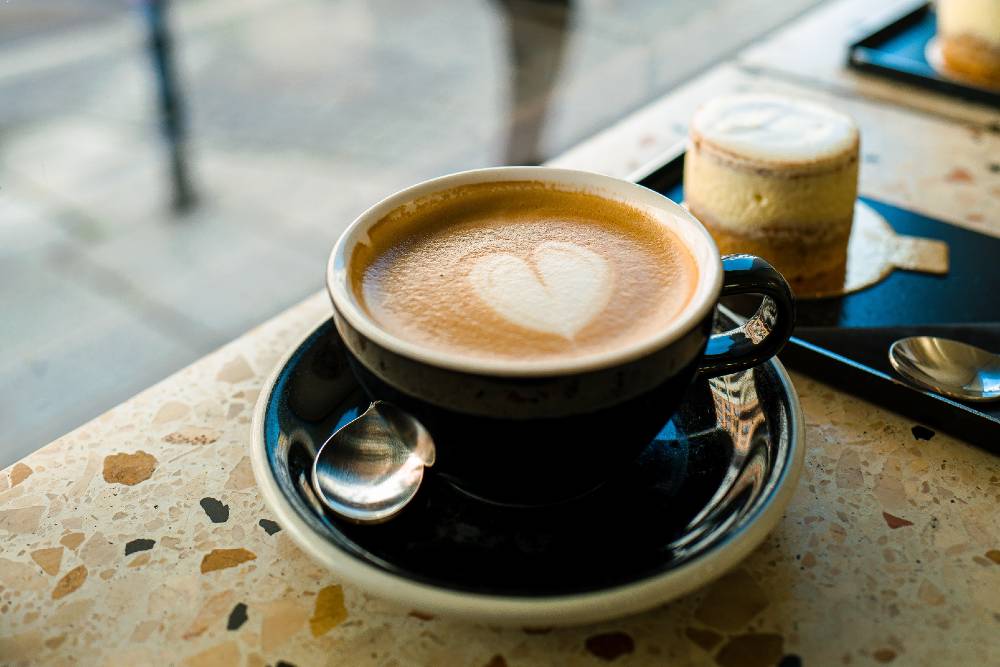
Final Thoughts
Espresso making has a lot of variables depending on the type of machine you have and the way you like to enjoy your coffee. It’s a balance of art and science and allows room for creativity within the recommendations. Whether you enjoy following a set procedure or you prefer tweaking each variable until you master the brew, espresso-making is a fun and rewarding process.
Happy Brewing.
Related Reading


